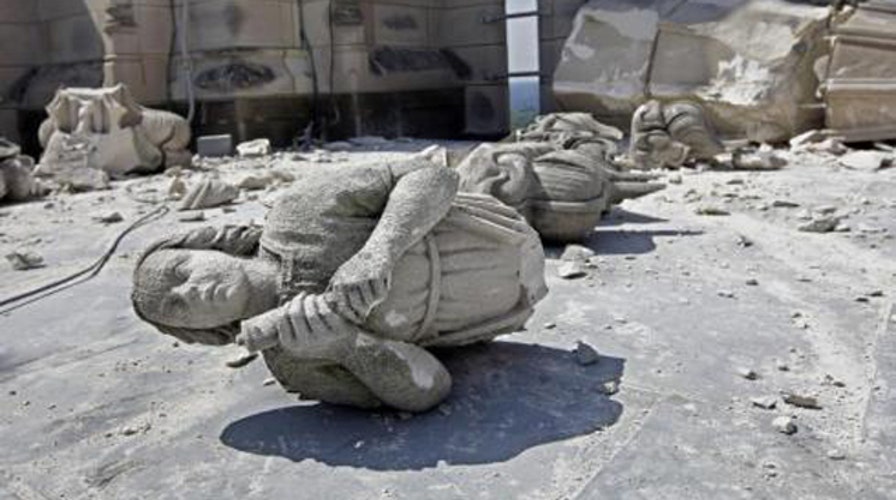Is your state at risk for an earthquake?
Oregon State University professor Chris Goldfinger explains what areas made the list
A new study by the U.S. Geological Survey suggests 42 states have a reasonable chance of experiencing damaging ground shaking from an earthquake in the next 50 years.
The 8 states that did not have significant hazard levels are Florida, Iowa, Kansas, Louisiana, Michigan, Minnesota, North Dakota and Wisconsin. The 16 states at highest risk are Alaska, Arkansas, California, Hawaii, Idaho, Illinois, Kentucky, Missouri, Montana, Nevada, Oregon, South Carolina, Tennessee, Utah, Washington and Wyoming.
Chris Goldfinger, professor of geology and geophysics at Oregon State University told FoxNews.com the study helps state and local officials plan and protect areas at risk.
“The maps come out every six years, and with research advancing rapidly, there are certainly some changes,” said Goldfinger.
The biggest changes to the map are on the west coast. Geologists are focusing on the Cascadia subduction zone in the Pacific Northwest along with the San Andreas and Hayward faults in California.
"Sooner or later a [large magnitude] earthquake will occur in the Pacific Northwest.”
“In California, many faults are better known, some are newly mapped, but the biggest change is in the methods used, that now incorporate models that allow much longer earthquake ruptures along major fault,” said Goldfinger. “These ruptures are not known from geology or from history, but they are a possibility, so [they] are included in the new maps.”
He says earthquakes similar to ones that struck in Indonesia and Japan over the past decade could happen in the western U.S.
“We are expecting an earthquake like that, we can’t forecast it in anyway but we’re working on probabilities of those earthquakes … sooner or later a [large magnitude] earthquake will occur in the Pacific Northwest.”
Even though earthquakes are less frequent in the central and eastern U.S., they can still happen and cause serious damage.
Goldfinger points to an August 2011 5.8 magnitude earthquake centered in Virginia that jolted much of the eastern seaboard. No deaths were reported but there was widespread minor damage to buildings.
“If you were even to have a moderate-sized earthquake like the one [in] Virginia and something like that happened in a place like New York City with no preparation at all- the risk would be very high even though the earthquake might not be that large.”
Raising awareness of the risk is key, he says, however “funding is very poor [with] almost nothing really in terms of the national budget … we should do much much more for such a serious problem.”

